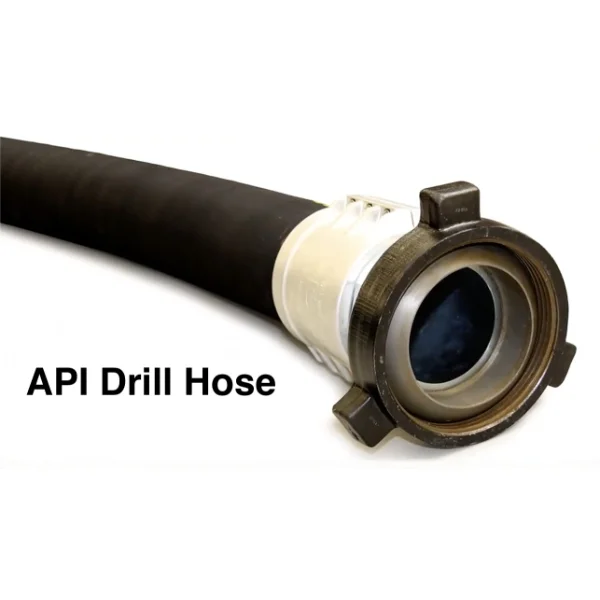Petroleum hose is a high-performance industrial hose specially used for transporting petroleum and its derivatives (such as crude oil, fuel oil, liquefied natural gas, etc.). Since petroleum media are flammable, highly corrosive, high temperature, and high pressure, it is very important to choose a suitable petroleum hose. High-quality petroleum hoses can not only improve transportation efficiency but also reduce safety risks, extend service life, and reduce maintenance costs. So, how to choose a high-performance petroleum hose? This article will comprehensively analyze the materials, structures, technical standards, applicable working conditions, service life, and other aspects to help you make a wise choice.
1. The main application scenarios of petroleum hoses
Before choosing a suitable petroleum hose, you must first clarify its application scenarios. Different working conditions have different performance requirements for hoses, mainly including the following categories:
Oil extraction: When used for offshore or onshore oil extraction, it needs to have high-pressure resistance, corrosion resistance, and good wear resistance.
Refineries and chemical plants: When used to transport finished oil and chemical solvents, the hose is required to be resistant to high temperatures and chemical corrosion.
Tank truck and storage tank transportation: The hose needs to have good flexibility, weather resistance, and antistatic properties to prevent fuel leakage and static sparks.
Gas stations and aviation refueling: The transportation of finished fuel requires hoses to be oil-resistant, pressure-resistant, and meet environmental protection and safety standards.
Only after clarifying the application scenario can we more specifically select the appropriate oil hose to ensure safety and efficiency.

2. Key factors for selecting high-performance oil hoses
2.1 Material selection: Oil resistance, pressure resistance, and corrosion resistance are the key
The main components of oil hoses include inner rubber, reinforcement layer, and outer rubber. The material selection of each part determines the performance of the hose.
Inner layer material: usually fluoro rubber (FKM), nitrile rubber (NBR,) or ethylene propylene diene monomer (EPDM). Fluororubber is resistant to high temperature and chemical corrosion, and is suitable for high-demand working conditions; nitrile rubber has good oil resistance and is widely used in oil hoses; EPDM is suitable for transporting certain specific chemicals.
Reinforcement layer material: Use high-strength synthetic fiber or steel wire braided layer to improve the pressure resistance and mechanical strength of the hose. For high-pressure transportation environments, it is recommended to choose a hose with a multi-layer steel wire-reinforced structure.
Outer material: Usually chloroprene rubber (CR) with good weather resistance and wear resistance is used, which can resist the erosion of environmental factors such as ultraviolet rays, ozone, oil pollution, and extend the service life.
2.2 Hose structure: multi-layer design improves safety
Oil hoses usually adopt a multi-layer structure to improve their comprehensive performance. High-performance hoses usually have the following structural characteristics:
Three-layer design: including inner layer, reinforcement layer, and outer layer, suitable for ordinary oil transportation scenarios.
Four-layer or multi-layer design: including additional reinforcement layers, such as double-layer steel wire braided layer or spiral steel wire layer, to improve the hose's anti-twisting ability and pressure resistance, suitable for high-pressure transportation and deep-sea oil extraction.
Inner lining conductive layer: used to prevent static electricity accumulation during transportation, and reduce the risk of fire and explosion, especially suitable for fuel transportation applications.
2.3 Pressure resistance: ensure safe use
The pressure resistance of oil hoses is crucial, usually including two indicators: working pressure and burst pressure.
Working pressure (WP): It is the maximum pressure that the hose can withstand during normal use. The common working pressure range is between 10 and 50 bar.
Burst pressure (BP): It is the limit pressure that the hose can withstand, usually 3-4 times the working pressure.
When selecting, ensure that the rated working pressure of the hose is greater than the actual pressure of the conveying system, and leave a certain safety margin.
2.4 Temperature resistance: Special attention should be paid to high and low-temperature environments
The working environment temperature of petroleum hoses is usually wide, with a common range of -40℃ to 120℃.
High-temperature environment (such as refineries, ship refueling, etc.): It is recommended to choose high-temperature resistant fluoro rubber or silicone rubber lined hoses.
Low-temperature environment (such as oil transportation in cold areas): It is recommended to choose low-temperature flexible rubber hoses, such as special synthetic rubber or NBR hoses with optimized plasticizer formula to prevent low-temperature brittle cracking.
2.5 Antistatic performance: Prevent safety hazards
When conveying flammable media such as gasoline and diesel, petroleum hoses must have good antistatic ability to avoid sparks and explosion risks caused by static electricity accumulation.
Conductive hoses: Use conductive rubber lining or add conductive wires to the reinforcement layer to enable static electricity to be smoothly transmitted to the ground.
API-compliant: It is recommended to select hoses that meet international antistatic standards such as API 1529 or EN 1360 to ensure safety.
2.6 Certification standards: Choose products that meet international standards
High-performance petroleum hoses must comply with corresponding international or industry standards, such as:
API 7K, API 16C (for oil drilling hoses)
ISO 1825 (for aviation fuel delivery hoses)
EN 1360 (for gas station hoses)
BS 4089 (for tank truck hoses)
Choosing products with relevant certifications can ensure that the quality of the hoses meets industry requirements and is safer and more reliable to use.
When choosing high-performance petroleum hoses, it is necessary to comprehensively consider factors such as materials, pressure resistance, temperature resistance, antistatic performance, certification standards, etc., and select them in combination with specific application scenarios. Correct maintenance and use methods are equally important, which can effectively extend the service life of the hose and improve safety and economy. I hope this guide can help you find the most suitable petroleum hose and ensure the efficient and stable operation of the petroleum delivery system!
www.tianyiindustry.com
Zaozhuang Tianyi Industry Co., Ltd.,
